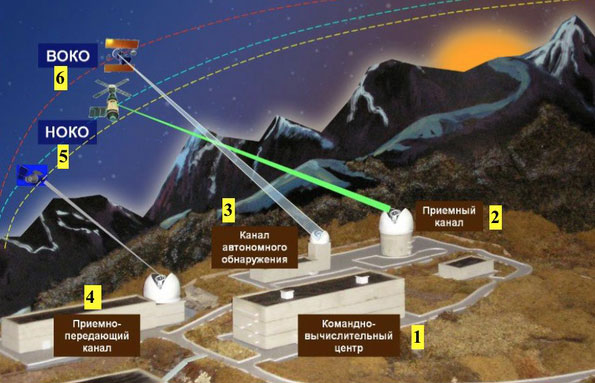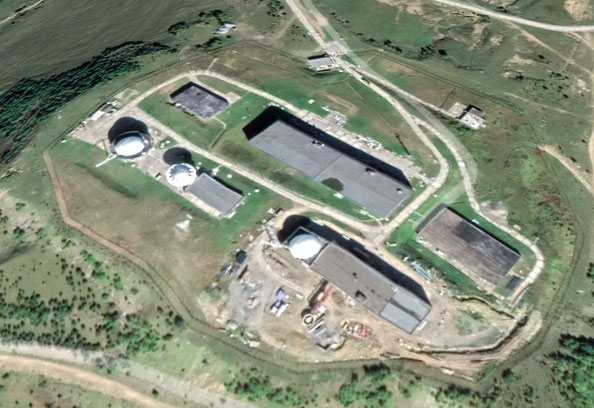Laser weapons have the capability to shield a significant portion of Russian territory from the view of satellites in the sky.

Krona’s lidar complex. 1: control and calculation center, 2: narrow-angle telescope, 3: wide-angle telescope, 4: lidar system, 5: low Earth orbit satellite, 6: high orbit satellite – (Photo: SPACE REVIEW)
The magazine Space Review reports that Russia is building a new ground-based laser facility to disrupt orbiting satellites.
This new laser facility is called Kalina. Its purpose is to dazzle and thus temporarily blind the optical sensors of satellites gathering intelligence from above.
Kalina is part of the Krona space surveillance complex of the Russian Ministry of Defense, located a few kilometers west of the Zelenchukskaya area, a site known in the astronomical community.
Also nearby is the Special Astrophysical Observatory of the Russian Academy of Sciences (home to the 6-meter BTA telescope) and the RATAN-600 radio telescope.
Kalina operates in pulsed mode in the infrared spectrum, generating about 1,000 joules per cm². In comparison, a pulsed laser used for retinal surgery is only about 1/10,000 as powerful.
Spy satellites using optical sensors tend to operate in low Earth orbit at altitudes of several hundred kilometers. These satellites often take several minutes to pass over any specific point on the Earth’s surface.
This requires Kalina to “run” continuously for extended periods while maintaining a constant operation on the optical sensors. These functions are performed by the telescope system.

Location of the Krona radar and lidar complex near the village of Storozhevaya – (Photo: SPACE REVIEW)
According to Asia Times, Kalina can target a satellite hundreds of kilometers above, meaning this laser system can shield a very large area – approximately 100,000 km².
This is not the first time lasers have been applied in military operations. Previously, the U.S. military planned to use Airborne Laser (ABL) to shoot down ballistic missiles. ABL involved a very large, high-powered laser mounted on a Boeing 747. However, this program was ultimately canceled due to challenges related to thermal management and the maintenance of its chemical laser.
A more successful military application is the Large Aircraft Infrared Countermeasure (LAIRCM) system, used to protect aircraft from heat-seeking missiles. LAIRCM projects light from solid-state lasers onto missile sensors as they approach the aircraft, causing the weapon to be dazzled and lose track of its target.

Kalina complex under construction – (Photo: SPACE VIEW)
The U.S. military has also mounted lasers on army trucks and naval vessels to defend against small targets such as drones, mortar shells, and other threats. The Air Force is researching the use of lasers on aircraft for both defensive and offensive purposes.


















































